JAPAN
Religion

Religion

Cities in JAPAN
| Kyoto | Osaka | Tokyo |
Religion
General
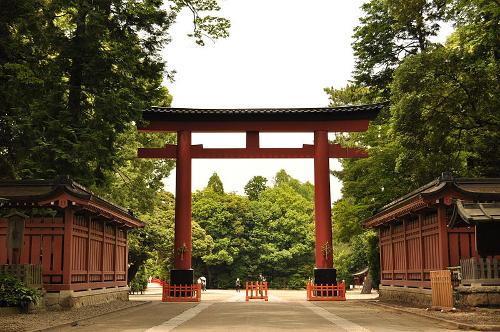 Third shinto gateway of the Hikawa shrinePhoto: Ocgp CC 3.0 Unportedno changes made
Third shinto gateway of the Hikawa shrinePhoto: Ocgp CC 3.0 Unportedno changes made
In Japan, freedom of religion is guaranteed by the constitution. The main religion is Shinto, which has about 130 sects and is heavily influenced by Buddhism. For the Japanese population, the differences between the two religions are marginal. Most Japanese therefore profess both Shinto (92%) and Buddhism (76%). In addition, more than 180,000 religious organizations are registered. These include new "religions" that may be based on Buddhism, but also science fiction or even comic strips. In many cases they resemble ordinary companies that sometimes turn over billions of euros. For example, the Buddhist religion / company Soko-Gakkai has 16 million followers and manages, among other things, schools, museums and hospitals. The political party Komeito emerged from this organization.
Religious minorities are made up of about a million Protestants and a small number of Roman Catholics (together about 1.2% of the population) and members of the "new religions", which consist of various hybrid forms of Shintoism, Buddhism, Taoism, Confucianism and some Christian religions (9.3%).
Infamous in 1995, the Aum Shinriky sect spread sarin gas on the Tokyo subway, killing 12 people and injuring 5,000 people.
Shintoism
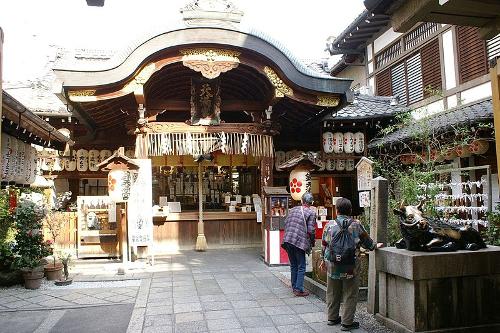 Nishiki Temple in Kyoto. JapanPhoto: Daniel Julie CC 2.0 Generic no changes made
Nishiki Temple in Kyoto. JapanPhoto: Daniel Julie CC 2.0 Generic no changes made
Shinto stems from animism. This is evident from the central concept of "kami", which not only denotes the sacred character of a person, but also that of objects or even concepts such as the sun, water, wind, ancestors, a tree or fertility. Kami comes from Japanese, but is written with a Chinese character pronounced "shin". Shinto then actually means "kami-no-michi", the way of the gods. In state Shinto the emperor occupies the top position.
A god such as in Christianity or Islam is unknown in Shintoism. Things are created through the cooperation of different kami. Something like a bible or Quran is also unknown, which means that there is a lot of freedom for the individual interpretation. These interpretations are expressed in rituals usually performed in front of the home altar at home. The purpose of the rituals is the physical and spiritual cleansing through which one is in harmony with nature. The physical cleaning in the bath is also very important for the Japanese.
The rituals are also performed in shrines or "jinjas" with Shinto priests, of which there are about 100,000. There are about 80,000 registered shrines that have an annual festival, "matsuri", which includes processions in which the house of the kami, the "mikoshi" is carried around on the shoulders of young men. Typically Japanese things like court music gagaku, sumo wrestling and Noh theater are strongly linked to Shinto. Death is irrelevant in Shinto and funerals are therefore often performed according to Buddhist rituals.
Buddhism
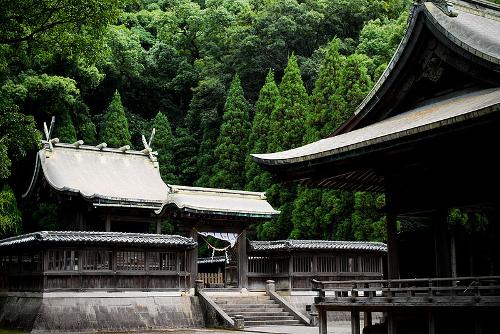 A traditional Japanese buddhist temple in the woods near Kagoshima, JapanPhoto: Mstyslav Chernov CC 3.0 Unported no changes made
A traditional Japanese buddhist temple in the woods near Kagoshima, JapanPhoto: Mstyslav Chernov CC 3.0 Unported no changes made
Original Buddhism originated in the 5th century BC. in India. The founder was the king's son Siddhartha Gautama, called Amida Butsu by the Japanese. The premise of Buddhism is that life is suffering, where disease, old age and death are inseparable. Attachment to life and desire form the foundation of suffering and the art is to break free from it and thus escape the cycle of suffering. Buddha is therefore not called "the Enlightened One" for nothing.
In the 6th century, Buddhism came to Japan through China and Korea. Due to this long journey, under the influence of Hinduism, Taoism and Confucianism, among others, not much of the original teachings remained. Thus, it was believed in Japan that Buddha could manifest himself in many ways. And that in turn fitted in well with Shinto, which knows sacred objects and concepts through the "kami". A kind of fusion took place between Shinto and Buddhism.
In the 7th century, Buddhism was made the state religion and many temples were established. At Nara, the Horyu-ji was built in 607, the oldest religious building still in use and the oldest wooden building in the world. At that time, Buddhist teachings spread to all aspects of life, but only in court circles.
More than 80 million Japanese indicated that they belonged to a Buddhist sect at the last census. In addition, more than 83 million Japanese considered themselves followers of Shintoism. This shows that the majority of the population considers themselves both Shinto and Buddhist.
Zen Buddhism
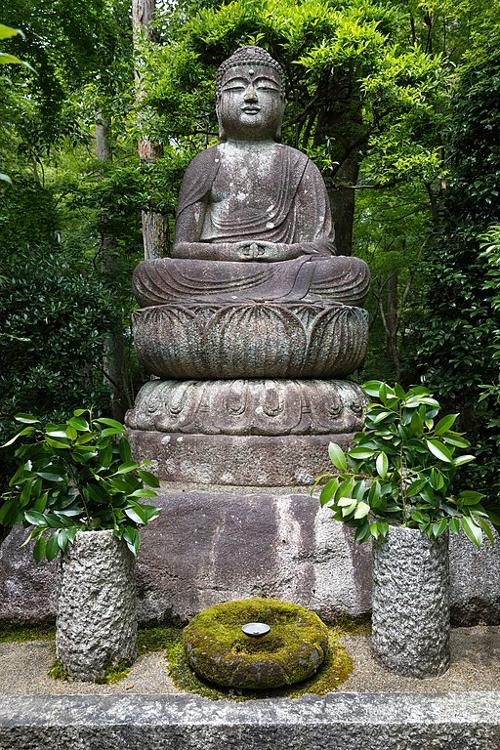 Stone Buddha statue at Zen Buddhist temple in Kyoto JapanPhoto: Basile Morin CC 4.0 International no changes made
Stone Buddha statue at Zen Buddhist temple in Kyoto JapanPhoto: Basile Morin CC 4.0 International no changes made
Zen Buddhism is a Buddhist movement and stems from Mahayana Buddhism that flourished in China and in 525 AD. was introduced in Japan and gained a foothold in the 12th century. Zen Buddhism was brought to Japan by two monks, Eisai and Dogen.
Zen Buddhism has had a great influence on the spiritual life of the Japanese over the centuries. It is not a real religion because it does not question whether there is a god or not. By practicing Zen Buddhism, the division between who one thinks one is and who one really is disappears. Physical and mental discipline is obtained through meditation.
The main zen schools at the moment are Rinzai and Soto, both originally from China. Although the differences are difficult to explain, it could be said that the Rizai school has more emphasis on "zazen", sitting meditation, and that the Soto school has more emphasis on "koan", riddles. A famous mystery is what is the sound of only one hand clapping.
Confucianism
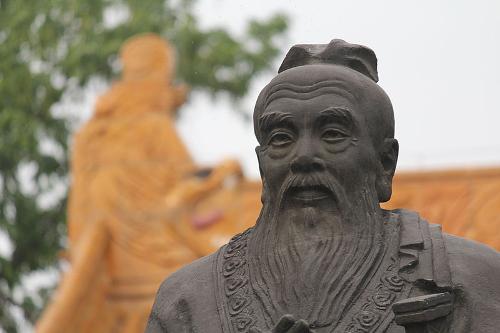 Confuscius, JapanPhoto: Kevinsmithnyc CC 3.0 Unported no changes made
Confuscius, JapanPhoto: Kevinsmithnyc CC 3.0 Unported no changes made
Confucianism is not really a religion, but as a kind of ethics it has had a major influence on the Japanese to this day. Confucianism originated in China about 500 BC and was developed by the teacher Confucius (Chinese: Kong Qiu, 551-479 BC).
Important are a loyalty principles such as child to parent or servant to lord. These principles were well suited to the shoguns and the samurai, who highly respected obedience to authority .
Sources
Japan
Lonely Planet
Japan
Reader's Digest
Kamachi, N. / Culture and customs of Japan
Greenwood Press
Scott, D. / Japan
Van Reemst
Shelley, R. / Japan
Times Books
Somerwil, J. / Japan
Gottmer/Becht
Stefoff, R. / Japan
Chelsea House Publishers
CIA - World Factbook
BBC - Country Profiles
Copyright: Team The World of Info